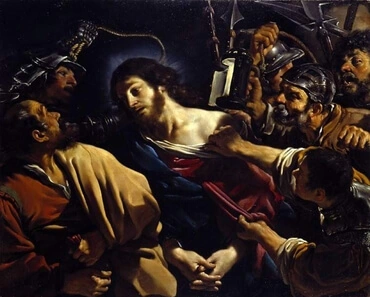Explanation of John 1:10
Door Brian David

The beginning of John 1 illustrated how divine truth – which is the ultimate expression of the Lord’s love – is the actual creative force of the universe and of reality itself. That idea is reinforced here: "him" refers to Jesus, who was the physical embodiment of divine truth, which indeed made the world.
This verse offers another level, though. "World" represents the church, which is defined in the Writings as "where the Lord is known and where the Word is." By that definition a "church" can be as small as one person, or as large as billions of people worshiping through a wide variety of denominations. And the Writings tell us that the Lord has made sure that such a church always existed, from prehistoric times when the Lord offered "the Word" – His truth – to people directly up through today, when we have the Word in the form of the Bible.
But the world did not know him. At the time the Lord came among us as Jesus, people had turned away from the deeper meanings of the Word (which they then had in the form of the Old Testament), and had little to no concern for knowing the Lord. His church – the church among the Children of Israel – had turned away.
This might seem like a merely historic idea, something that happened then but has little to do with us now. But each one of us is a "church," and each one of us can know the Lord and the Word, or turn away. We all go through states when we are like the church at the time the Lord was born, and He can rebuild us now even as He rebuilt the church then. For that to happen, though, we need to turn to the Word – the Bible – and know the Lord.
(Referenties: Apocalypse Explained 1093; Canons of the New Church 9; The Apocalypse Explained 294 [16])
Canons of the New Church #9
9. CHAPTER VI. THE CREATION OF THE UNIVERSE BY THE ONE INFINITE GOD, FROM THE DIVINE LOVE BY MEANS OF THE DIVINE WISDOM
1. Enlightened reason sees that the very first origin of the world is love, and that the world was created from that by means of wisdom. It is owing to this and not anything else that the world is, from its first things to its last things, a work that is eternally self-consistent.
2. That the world was created from love by means of wisdom, thus by means of the Sun 1 which is pure Love with Jehovah God in the midst of it, can be seen from the correspondence of love with heat, and wisdom with light. By means of these two, heat and light, the world continues in existence, and year by year all the things on its surface are created; and if they were both withdrawn, the world would fall into chaos, and so into nothing.
3. There are three things that follow in regular sequence and go forth in inseparable companionship, namely, Love, Wisdom, and Use.
4. Love comes into existence by means of wisdom, and in use continues in existence.
5. These three are in God, and the three of them go forth from God.
6. The created universe consists of an endless number of receptacles of those three.
7. Because love and wisdom come into existence and continue in existence in use, the created universe is a receptacle of uses, which, by reason of their source, are limitless.
8. As all good is from God and good and use are one, and as the created universe is the fullness of uses in forms, it follows that the created universe is the fullness of God.
9. That creation was effected from the Divine Love by means of the Divine Wisdom is meant by these words in John:
In the beginning was the Word, and the Word was with God, and the Word was God.... All things were made by Him . . . and the world was made by Him. [John 1:1, 3, 10.]
By " God " there is meant the Divine Good of love, and by " the Word " which also was God, the Divine Truth of wisdom.
10. Evils, or evil uses, did not come into existence until after creation.
Voetnoten:
1. This 'Sun' is the Sun of the spiritual world, not to be confused with the sun of the natural world. See above, chapter iv.






